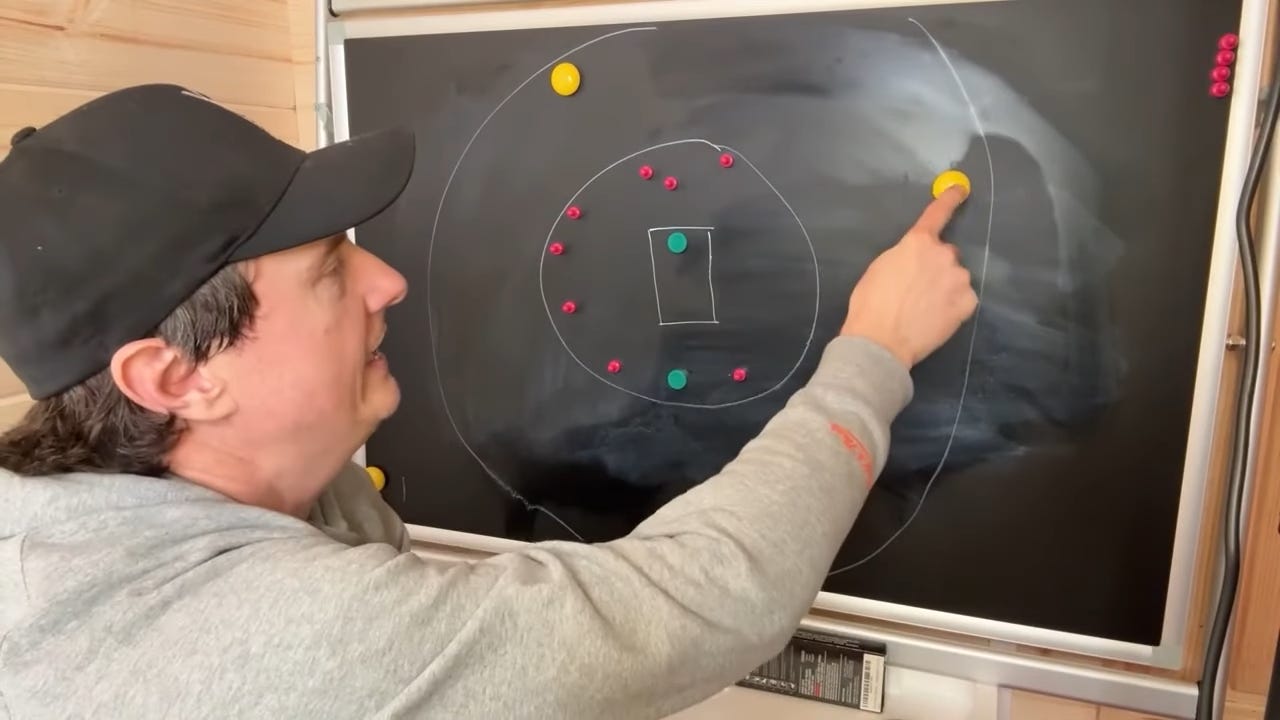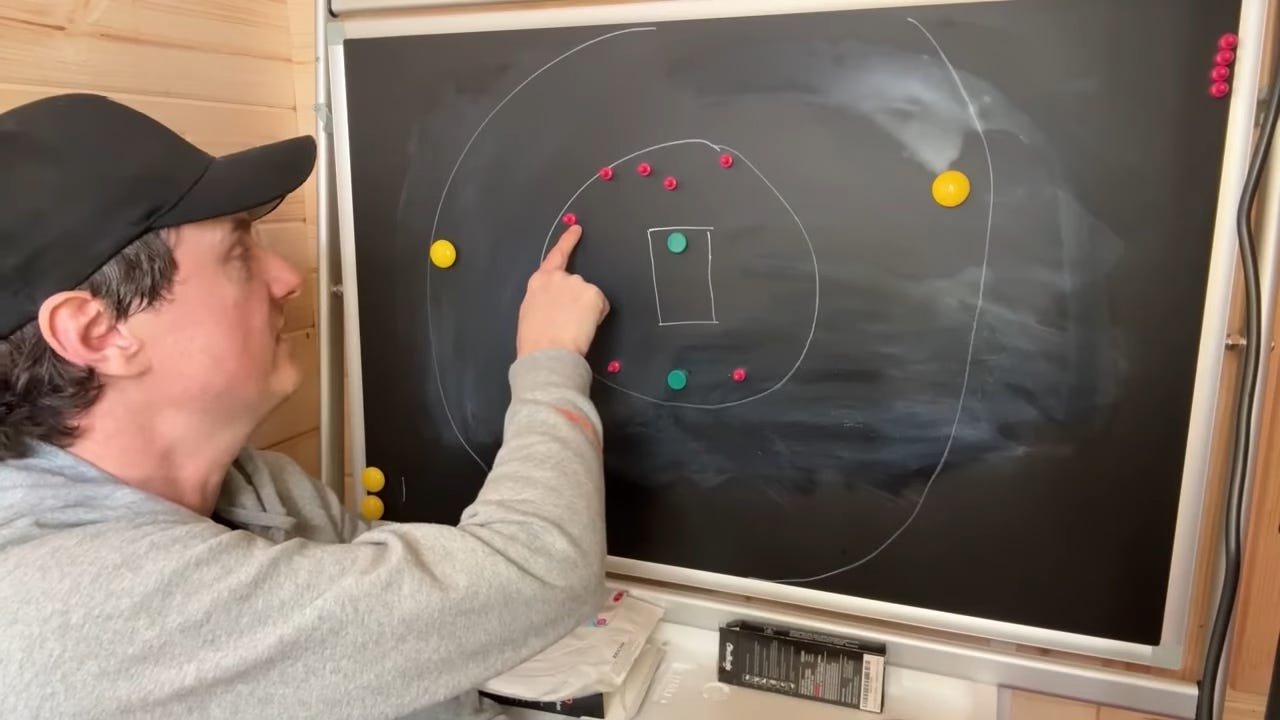The short history of two men out
How field placements went from routine to funky in powerplays
Jonathan Wilson has a book called Inverting the Pyramid. It's all about how football formations have changed over time.
In American football, they give teenagers thick folders full of plays to remember for each game. These two sports absolutely fetishize this sort of stuff. In cricket, we kind of ignore the changes in our field.
But I want to give you a brief history of how fields have changed in limited-overs cricket. The history of the wagon wheel essentially tells us where the fielders are not.
And so I want to tell you the story of Two Men Out.
For a long time, when it was red-ball limited-overs cricket, ODI fields in the powerplay had a third man, a fine leg, and everyone else in the circle. Mainly on the offside. Even when it switched to white-ball limited-overs cricket, this was just the standard field we saw. We put a third out because, you know, edges can go there. It was probably before people really guided the ball down there. And the fine leg down, of course, in case the bowler got a little bit too straight and you could tuck them around. Also, it helped with bouncers. This was a really, really standard field. The problem is that batters started to evolve and they worked out how to handle a field like this. If you've watched any modern cricket, you'll probably know what I'm talking about.
So the first big change was essentially putting in a short fine-leg, and a deep backward square leg. That stopped people just flicking the ball off their pads over and over again, and also restricted pull shots. It made a lot of sense, this kind of a field. There was a player called Michael Di Venuto from Australia. He's actually left-handed and he was really good in limited-overs cricket at basically flicking the ball or playing pull shots of balls that weren't particularly short. But once they put this fielder out in the powerplay, he really struggled to make runs as quickly as he should have.
This field wasn't directly targeting him, but it was around that time in the 1990s that we just worked out that we didn't actually need a fine leg. What we needed more than anything else was a deep backward square leg.
The next change was on the offside. Essentially at this point, people would just slash the ball through the offside over and over again. So you needed an offside sweeper to be able to stop all of those shots. And think about it, if you are trying to attack at offstump or just around offstump, you usually have a slip in place as well. So square on the offside is the place that is easiest for you to hit a boundary, and players got really good at that. So if you had someone at point, it would usually be your best fielder.
But eventually that position became more like a short third, who would defend the slash backwards of the wicket. And the sweeper on the offside was supposed to cover pretty much everything on the boundary in that area. Which meant he would hopefully stop cover drives, but also be able to field the balls that came off a powerful slash or a cut shot. Again, this is fairly normal.
Keep reading with a 7-day free trial
Subscribe to Good Areas to keep reading this post and get 7 days of free access to the full post archives.






